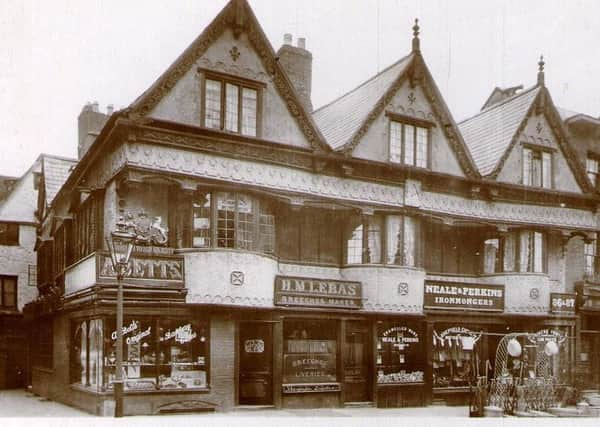Look Back with Little: did Banbury market lose out to agricultural traders?


His book contains an interesting if controversial comment that, in many ways, shops became more important than the market to which they owed their being.
In today’s article I aim to examine this comment by reference to a Robert Boyd publication entitled From Banbury Cakes to a Bushel of Sweetmeats.
Advertisement
Hide AdAdvertisement
Hide AdThis was a look at traders and trademarks by Barry Davis and myself published in 2011.
It was divided into sections and number two was called ‘Agricultural Influences in the town’.
At the outset the statement that in the second half of the 19th century, ‘Banbury was at the centre of a large rural and agricultural area,’ remains true today, however many related businesses are no longer part of the retail scene despite the fact they became household names.
Broughton and Wilks faced onto Market Place and could take advantage of the opportunity to create a display on market day.
Advertisement
Hide AdAdvertisement
Hide AdThey were at 37 and 39 Market Place where in common with other town traders they had strong farm connections.
Their bills informed potential buyers they were ‘agents for all the leading farm implements and machinery’.
Typical was one in 1897 sent to a customer in Middleton Cheney. A Hornsby Sickle cost her 12/6 and she was charged £15 15s for the cutting of acreage of corn. Lamprey and Son could be found at 34 Bridge Street.
Their trade was initially based on the agricultural needs of the area. They were undoubtedly best known for their major corn merchants business.
Advertisement
Hide AdAdvertisement
Hide AdHowever John Lamprey, who lived above his shop on the fringe of the Market Place and his son William Linnell Lamprey launched the company into a late Victorian expansionist era by exploring new channels of trade.
One of these was a brick, tiles and pottery business near Duke Street in Grimsbury.
The Lampreys were also busy canalside, with huge lime kilns at Wharf Mill close to Lower Cherwell Street and at Bridge Wharf.
Mawles was another well- established firm with stores at 22 and 65 High Street as well as an agricultural workshop in Fish Street (George Street). They started trading before 1900 and finally closed in the autumn of 1977.
Advertisement
Hide AdAdvertisement
Hide AdNeale and Perkins were also in the High Street. They were ironmongers but unlike many competitors, their goods appealed more to farmers’ wives rather than to the farmers themselves.
A classic case was the lady who bought a tin kettle for 6d.
When this developed a hole she was able to get it repaired by Neale and Perkins who charged her a further 6d.
In the 1890s, Joseph Perkins extended his activities to include the making of copper items for big houses in the Banbury region. These were produced at his workshop in Pepper Alley.
Advertisement
Hide AdAdvertisement
Hide AdWatts and Son (Banbury) Ltd described their Oxford Road location as ‘the South Midlands Premier Seed House’.
In an advertisement placed in the 1958 Official Market Guide of Midland Marts Ltd they posed the question, ‘How little does good seed cost?’
The answer was discovered by many farmers who used their range of products including seed corn, British certified seeds and feedstuffs.
Like Lampreys they were also agents for Sharpes pig and poultry foods.
Advertisement
Hide AdAdvertisement
Hide AdSome of the shops with agricultural connections were additionally important because of the issue of the retention and conservation of distinctive old buildings.
Neale and Perkins were contained within the Vivers building. This was not only part timbered but also a fine example of 17th century architecture. It was and is rated Grade 2* by English Heritage.
In a letter to the Banbury Guardian, Bloxham Road resident Olive Pursaill firmly believed Banbury needed the character derived from some of its buildings so that visitors had specific things to look at whilst they were in town to spend money in local shops, a point not always appreciated.
Witness the destruction of the cake shop in Parsons Street.